Join the ICONS
Dance ICONS is a global network for choreographers of all levels of experience, nationalities, and genres. We offer a cloud-based platform for knowledge exchange, collaboration, inspiration, and debate. Dance ICONS is based in Washington, D.C., and serves choreographers the world over.
Subscribe today to receive our news and updates. Become a member of your global artistic community -- join the ICONS!
CAROLYN DORFMAN: THE LEGACY PROJECT
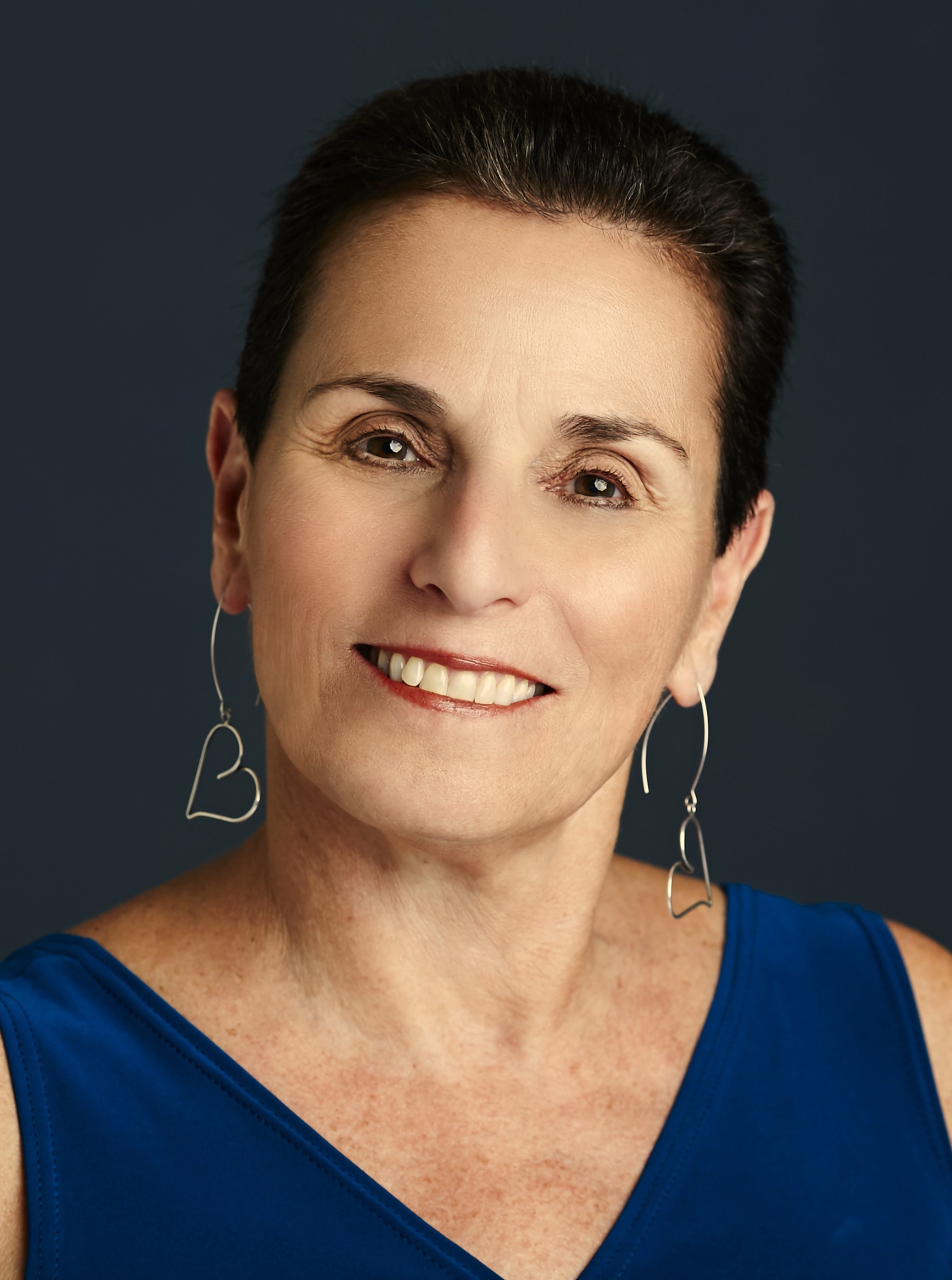
American choreographer Carolyn Dorfman and her company, Carolyn Dorfman Dance, have been a fixture in the American modern dance scene for over 40 years, creating a significant body of work with poignant and thought-provoking subject matter. Her works are informed by her experience as a child of Holocaust survivors and a first-generation Eastern European Jew. She spoke to ICONS about these dances, how they came to be, and how they exist in the context of her career. The dances were made as tributes to history, but Dorfman fears they are all too relevant today.
Dance ICONS: You were trained as a jazz dancer growing up and then studied many styles in college. What made you settle into the movement vocabulary that you use to create dances?
Carolyn Dorfman: I started as a tap and jazz dancer. So, I was very interested in rhythms, big movements, and taking space. When I was 15, I went to a University of Michigan student performance of the Passacaglia C Minor by Doris Humphrey. I loved the architecture of the ensemble in the space and of the movement. I loved the breath phrasing. I loved the duet against the ensemble. I said, that's what I want to do, so I went to study modern dance and learned about the unique voice of the individual artist, which is the essence of modern dance at its core.
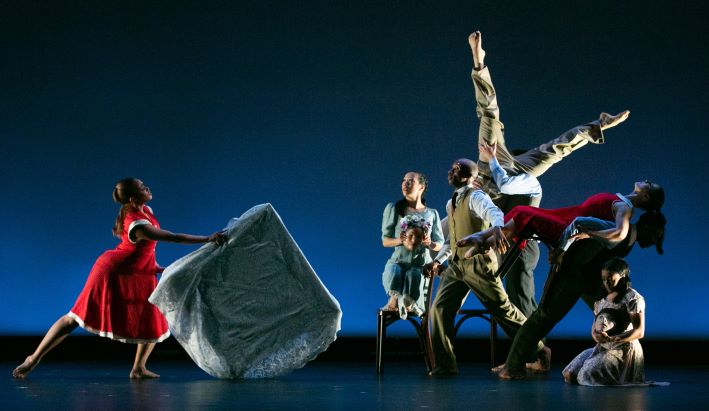
ICONS: You have a body of work called The Legacy Project, which deals with your Jewish heritage, culture, and ultimately persecution, elimination, and survival. What do these works bring to our social discourse in 2024 and 2025?
CD: I never intended to make these works. If I wasn't a dancer, I would have been a psychologist. I'm fascinated with people, life experience, and human relationships. These works percolated over time and each for a different reason. I began to understand this need to speak about my experience as a child of Holocaust survivors and child of immigrants. I began to understand how it shaped every facet of who I am -- my sense of justice, equality, and deep respect for every human being. When these works came about, I made them to honor history.
My mother used to say, “You need to go see this movie, you need to go read this book, you need to know about all this,” and I think I wanted to prove to her that I really understood and she could rest assured that I will never forget. For me, the Holocaust is a lens through which we look at one of many horrific events, genocides, and oppressions. I made these works with a sense of history, yet that history is today's reality, regardless of where you go around the world. They speak to our ability to see people as “other,” to condemn people, to treat them as “vermin,” so that we can literally demolish them. My parents faced it in Europe, then in the U.S. at times; it is happening in 2024. I am heartbroken that these works are so relevant.
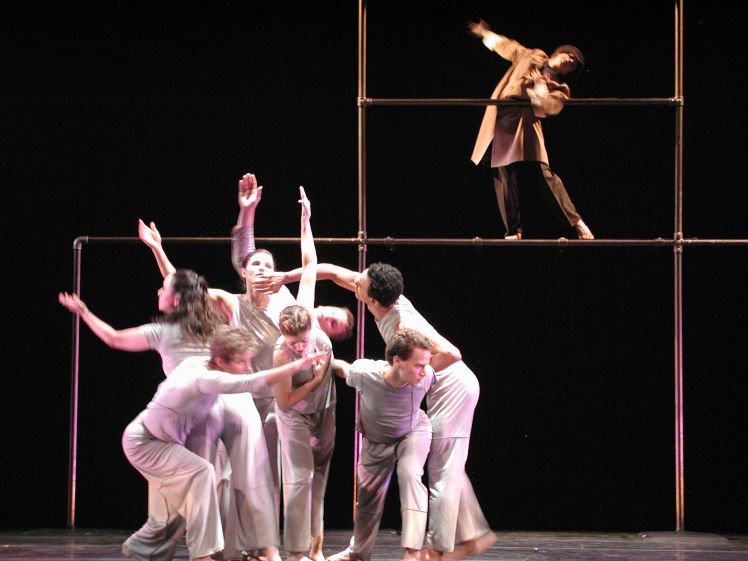
ICONS: How do you go about actually making a new dance with such sensitive and specific source matter?
CD: I first start with the world that I'm interested in creating; then I begin to look for movement metaphor. Then I wonder what structure to use. Is it going to be a suite of dances? Is it going to be one whole that connects beginning, middle, and end? Then, I start with the dancers; I throw out words that come to me, whether from poetry, whether from the stories, whether from a song that I may or may not use. For example, one of the dances is Potato Peelers, which is based on female laborers in concentration camps.
I began with the slicing and slashing movement of actually peeling potatoes, but with the energy and the weight of somebody who had to do that 16 hours a day in the camps. Then there are even more questions. Will I structure it with text or not? What kind of props can evolve into different things? What elements, from movement to production, ultimately create the world?
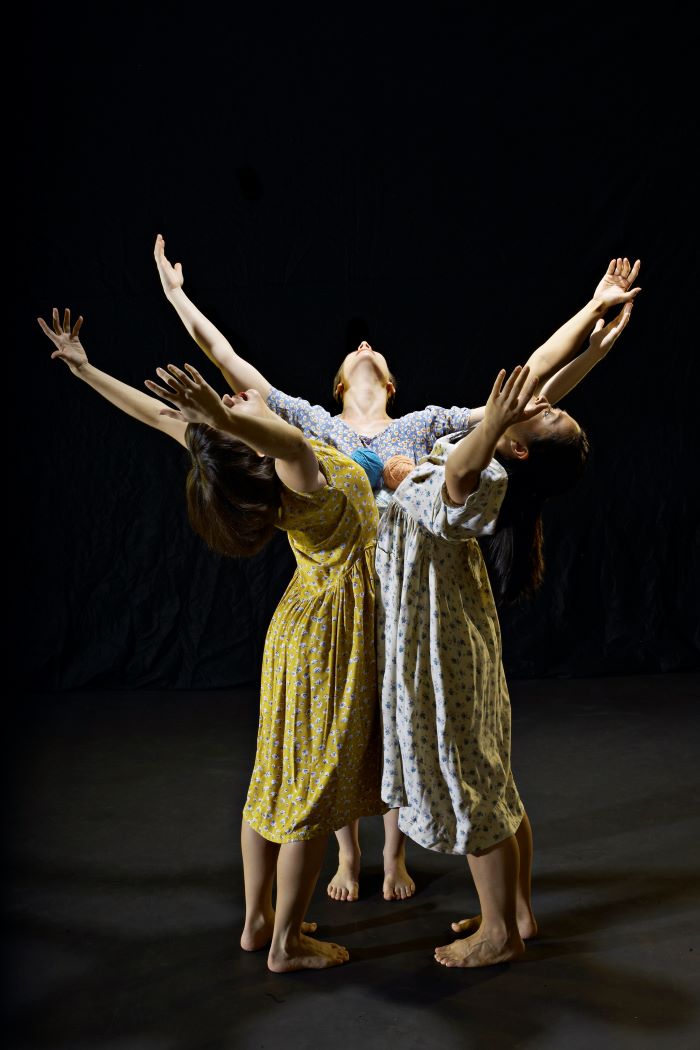
ICONS: Echad has an iconic 8ft wheel set piece, and it is a dance of your Legacy Project, but was also made in response to 9/11. How do these topics converge to make this dance?
CD: 9/11 was one of two impulses for this work. The other was a company tour to Poland, and visiting Auschwitz/Birkenau concentration camps. The reality of both of those events was that their guiding ideology was so consuming that it completely wiped out the humanity of the people it would attack. The perpetrators no longer saw their victims as human beings, and the essence of the community became more important than any one human being. The opposite of that is: when the value of the individual is too high, we get anarchy. As I walked around Auschwitz, there were walls of photographs of prisoners, and I just looked in their eyes. If you really could have looked in their eyes, could you actually kill them? I wanted to make a piece about this delicate balance between the community and the individual becoming too important.
In the dance, the wheel is a force and something that controls people. It becomes an altar for human sacrifice, but ultimately someone denies the human sacrifice. One person stands up and says no, which opens a window to a world that is completely different. In this new world, people have the freedom to come and go from ideology, be that religious or political, as symbolized by the wheel.
In the new world, people can go under the wheel, but they can be flexible in their connection to the ideological power. We are then unique individuals who exist in relation to one another. And that's the power, to me, of a successful society. This idea is in all of my work, but in Echad, the dancers must live in relationship to the community, and if they don’t, it is physically dangerous for the dancers. This dance requires them to be in the equilibrium that the dance is speaking about, and that’s what I think makes it powerful.
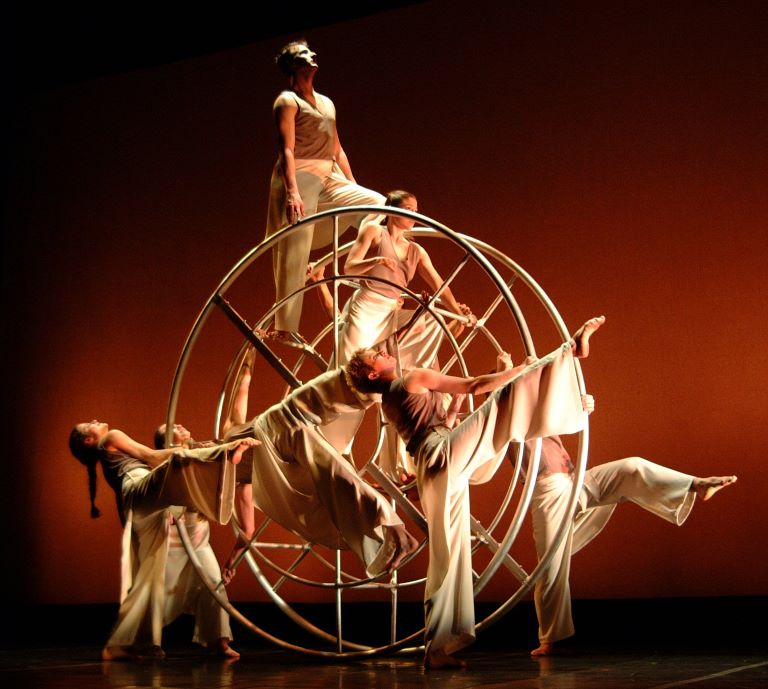
ICONS: Do you have any performances of these works coming up to share with our readers?
CD: Carolyn Dorfman Dance is going to be a part of the International Human Rights Arts Festival in December, a multi-day event happening at The Tank in Manhattan, and we will be performing Cries of the Children. This was the first of the Legacy works that I created. That subject matter was not the Holocaust because it wasn't my history. I wasn’t there; I didn’t know what it felt like. But what I did know was what it felt like to live with the nightmares I had from hearing about my parents' experiences. And that's what Cries of the Children speaks to: intergenerational trauma. I wondered how my parents survived, and a haunting lifelong question: Would I have survived?
In January, we will be presenting The Legacy Project: A Dance of Hope, a narrated performance that takes an audience on a journey at 92NY, also in Manhattan. We have a long history at 92NY; many of these works were shown in process there and have been performed there as well. We’re showing a triptych of sorts: two full works done in three parts, Mayne Mentshn, which is Yiddish for “my people” (Acts 1 and 2) and Cat’s Cradle. Firstly, we have “The Klezmer Sketch” which speaks to gesture, humor, tradition, ritual, music, and “The American Dream,” which speaks to the coming to America, immigration, assimilation, and that fragile thread of maintaining who we are, where we've come from, while becoming part of a larger whole.
That is the question that we struggle with as immigrants and the children of immigrants and the children's children of immigrants. In between those two pieces is Cat's Cradle, a work set to poetry written in Theresienstadt or Terezin, a ghetto in present day Czechia that was a holding ground primarily for Jews on their way to the gas chambers of Auschwitz. My mother and her two sisters were 15, 16, and 17 respectively when the war broke out, and survived the war because they could knit. They actually worked in the camps, and they knitted for the soldiers. After the war, they knitted while they told us their stories and they knitted our past to the present by connecting us to the people in Europe and ultimately connecting us to future generations.
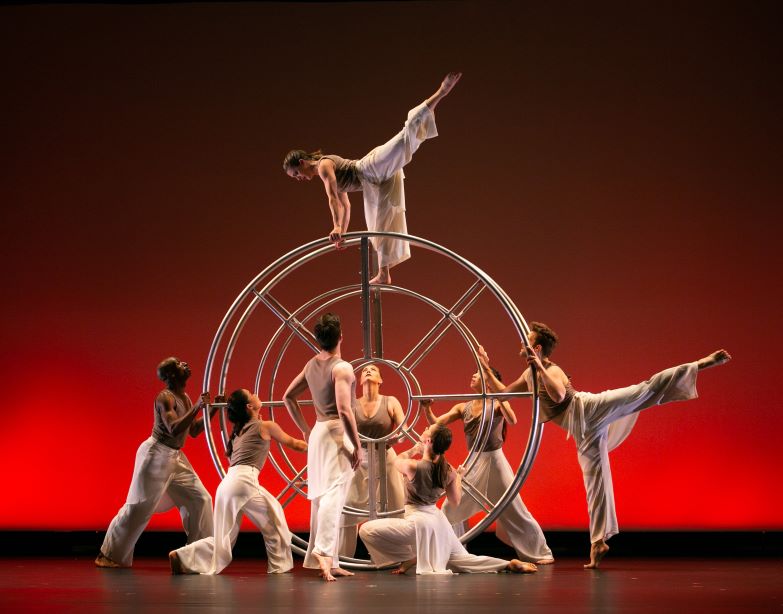
ICONS: You are working on a new work that will expand The Legacy Project. What can you tell us about this new piece?
CD: I'm creating a work that honors the story of Max Heller, a young teenager in 1937 who met an American woman while dancing in the park in Vienna. When the Nazis annexed Austria a year later in the Anschluss, Max wrote to this woman and she, with the help of a Jewish business owner and others in Greenville, SC, helped bring him, his family, and his future wife to the United States. As both a businessman and eventually the first Jewish mayor, he transformed Greenville, successfully championing desegregation at his company and City Hall while providing equal pay for his employees and pensions for public servants. Heller would not accept the status quo and defied South Carolina’s unrelenting segregation laws.
He knew the evil of hate and understood the pain and destruction it caused. Given the chance, he chose a different path. Max Heller often described the events that saved his family as “a series of miracles.” Yet, these “miracles” were the result of ordinary people acting with extraordinary compassion and defying societal norms. The central theme? We are all people who can create miracles!
* * * * * * *
BIOGRAPHY OF CAROLYN DORFMAN AND COMPANY LINK:
https://carolyndorfman.dance/carolyn-dorfman/
PHOTO CREDITS:
Photography © Whitney Browne, Portrait of Carolyn Dorfman, © 2017, Photography © Tom Caravaglia, The Klezmer Sketch, The American Dream, and Cat’s Cradle, 2007, Photography © Alice Kreglow, Cries of the Children (1983), Photography © Whitney Browne, The Klezmer Sketch, Echad, Cat’s Cradle (2023), Photography © Andre Costantini, Echad, (2005)
VIDEO WORK SAMPLE:
INTERVIEW'S CREATIVE TEAM ACKNOWLEDGMENTS:
Interviewer: Charles Scheland
Executive Content Editor: Camilla Acquista
Executive Assistant: Charles Scheland
Executive Director: Vladimir Angelov
Dance ICONS, Inc., December 2024 © All rights reserved
![]()


